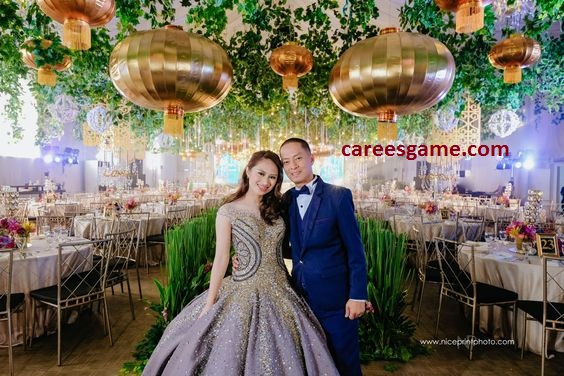The wedding scene in “Crazy Rich Asians” is one of the most visually stunning and culturally significant moments in the film, showcasing the opulence and extravagance of the characters’ lives while also highlighting deeper themes of love, family, and cultural identity. Directed by Jon M. Chu and based on Kevin Kwan’s best-selling novel, the film follows Rachel Chu as she navigates the complexities of marrying into one of Asia’s wealthiest families. This article will delve into the wedding scene’s significance, its breathtaking aesthetics, and the cultural nuances that make it a memorable cinematic experience.
Aesthetic Brilliance
crazy rich asians wedding scene takes place in a lavishly decorated church and culminates in a magnificent outdoor reception. The set design and visuals are nothing short of spectacular. Flowers, fabric draping, and intricate decorations create an enchanting atmosphere that reflects the extravagance of the wedding itself. Every detail, from the floral arrangements to the lighting, serves to emphasize the wealth of the Young family, with the lush backdrop of Singapore adding to the opulence.
One of the standout features of the scene is the wedding gown worn by Araminta Lee, played by Sonoya Mizuno. The gown is a breathtaking creation that embodies the blend of modern bridal fashion with traditional Asian influences. With intricate embroidery, layers of fabric, and an exquisite train, the dress symbolizes the convergence of cultures, illustrating the character’s heritage while embodying the grandeur of the occasion. The visual storytelling is further enhanced by the cinematography, which captures the emotions of the moment alongside the lavish details.
Cultural Significance
Beyond the visual spectacle, the wedding scene carries deep cultural significance. It highlights the clash of traditions and modernity, particularly as Rachel Chu, portrayed by Constance Wu, navigates her outsider status. While the Young family represents the pinnacle of wealth and status in Asian society, Rachel’s journey underscores themes of authenticity and self-identity. The wedding becomes a metaphor for the expectations placed on individuals by their families and society, particularly in the context of love and marriage.
The scene also showcases the importance of family and community in Asian cultures. The wedding is not just a union between two individuals; it is a celebration of families coming together. The attendance of family members, friends, and extended relatives signifies the collective investment in the marriage. This communal aspect contrasts with Western notions of weddings often being centered on the couple alone, highlighting how cultural values shape our understanding of relationships.
Themes of Love and Acceptance
At its core, the wedding scene encapsulates the themes of love and acceptance. Rachel’s initial trepidation about being accepted into Nick Young’s world is palpable, yet the wedding becomes a pivotal moment for her character development. As she grapples with her insecurities and the pressures of fitting into an elite social circle, the ceremony serves as a transformative experience.
The ceremony unfolds beautifully, culminating in a heartfelt exchange between Araminta and her partner, illustrating the sincerity of their love amidst the extravagance. The contrast between the lavish setting and the genuine emotions exchanged highlights the film’s message: that true love transcends material wealth and societal expectations.
The Impact of Music
Music plays a crucial role in enhancing the emotional weight of the wedding scene. The score, combined with well-placed songs, elevates the atmosphere and complements the visuals. The inclusion of traditional elements, such as live musicians playing classic tunes, adds an authentic touch, allowing the audience to feel the cultural richness of the event.
One of the most memorable musical moments occurs during the ceremony when a string quartet performs a beautiful rendition of “Can’t Help Falling in Love.” This song choice not only enhances the romantic ambiance but also connects the audience to the emotional stakes of the characters, creating a poignant moment that resonates long after the scene ends.
Cinematic Techniques
The filmmakers employ various cinematic techniques to amplify the impact of the wedding scene. The use of close-ups captures the characters’ emotions, while wide shots showcase the scale of the event. The editing rhythm varies, allowing moments of intimacy to breathe while contrasting them with the grandeur of the celebration. This dynamic interplay enhances the narrative, making the audience feel both the personal and the universal aspects of love and commitment.
The attention to detail is also noteworthy. From the carefully curated guest list to the extravagant decorations, every aspect of the scene is designed to immerse the viewer in the opulence of the world being depicted. This meticulousness serves not only to entertain but also to educate viewers about the complexities of Asian culture and the nuances of wealth.
Conclusion
The wedding scene in “Crazy Rich Asians” is more than just a display of wealth and luxury; it is a rich tapestry of cultural significance, emotional depth, and cinematic artistry. Through its stunning visuals, heartfelt performances, and exploration of themes like love, acceptance, and cultural identity, the scene leaves a lasting impression on viewers. It encapsulates the essence of the film, showcasing the beauty of Asian culture while also addressing universal themes that resonate with audiences around the world. Ultimately, the wedding scene serves as a reminder that love knows no boundaries, transcending societal expectations and uniting families in celebration.



